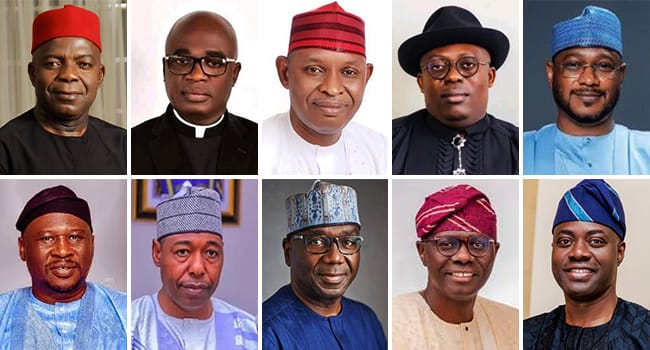Abuja, Nigeria — A new fiscal review has raised fresh concerns over the financial health of Nigerian states, as twelve sub-national governments failed to meet their 2025 first-quarter revenue targets despite collectively spending over N117 billion on debt servicing.
This was revealed through Q1 budget implementation reports obtained from state portals and the Open Nigerian States platform, a civic transparency initiative backed by BudgIT.
States identified in the report include Lagos, Abia, Adamawa, Bayelsa, Benue, Borno, Ekiti, Kaduna, Katsina, Kebbi, Ondo, and Taraba, many of which reported significant gaps between projected and actual revenue.
Lagos topped the list with N26.8bn expended on debt charges, yet it recorded only N583bn in revenue—well below its Q1 target of N728.9bn. The state government attributed the shortfall to delays in donor interventions and aid disbursements, which impacted overall revenue inflow.
Benue State came next, spending N21bn on debt despite generating just N67.05bn in revenue—barely 12.2% of its annual projection. The state cited issues with its newly adopted revenue collection software as a major factor for underperformance.
In Kaduna, N18bn was spent on debt repayment, surpassing the previous year’s Q1 figure by N2bn. However, revenue generation remained sluggish, with just N69.66bn earned—falling well short of its benchmark expectations.
Bayelsa and Adamawa states also saw debt costs climb to N13.5bn and N8.4bn respectively, even as they grappled with underwhelming federal allocations and IGR performances.
Taraba State, which spent N7.8bn on debt servicing, posted a meagre 19.2% revenue performance relative to its annual budget. Likewise, Ekiti expended N7.6bn on debts, falling short on several key inflow streams despite achieving improved internally generated revenue (IGR).
Other states—Borno, Katsina, Ondo, Kebbi, and Abia—also reported significant debt-related expenditures ranging between N1.8bn and N4.6bn. Yet, revenue outcomes across these states remained below the 25% quarterly benchmark, with Katsina recording just 9.3% of its annual target, and Kebbi falling to a worrying 7.8%.
Analysts say these fiscal imbalances reflect deep-rooted structural challenges in state-level public finance. Observers have called for urgent reforms, including more efficient revenue collection strategies, reduction in debt dependency, and increased transparency in fund utilization.
As fiscal pressures mount across the federation, stakeholders have urged state governments to adopt long-term strategies that prioritize financial sustainability, revenue diversification, and accountability.
By Adeola Olaniya | July 12, 2025
Discover more from DnewsInfo
Subscribe to get the latest posts sent to your email.




